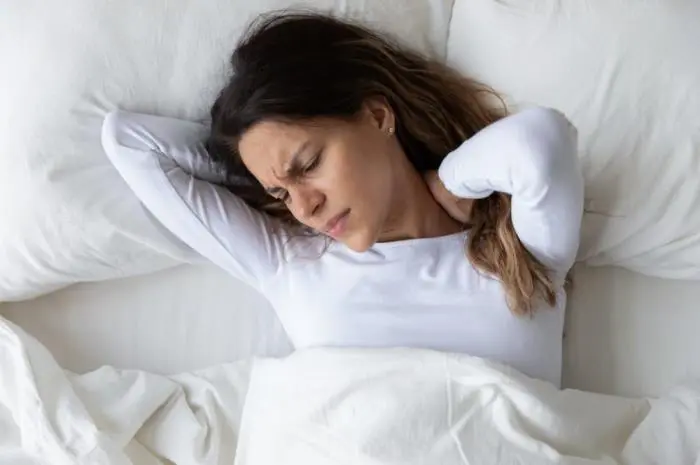Living with chronic pain can be an ongoing struggle, impacting every aspect of daily life and taking a toll on physical, emotional, and mental well-being.
While medications and other treatments may provide relief, incorporating relaxation techniques into your daily routine can offer additional support and help manage the symptoms of chronic pain more effectively.
From deep breathing exercises and progressive muscle relaxation to mindfulness meditation and guided imagery, there are a variety of relaxation techniques that can help soothe the body, calm the mind, and promote overall relaxation and well-being.
In this comprehensive guide, we’ll explore a range of relaxation techniques for chronic pain sufferers, empowering you to find serenity amidst the storm and reclaim control of your life.
Understanding Chronic Pain
Chronic pain is defined as pain that persists for weeks, months, or even years, often outlasting the normal healing process and becoming a long-term condition.
It can result from a variety of underlying causes, including injury, illness, inflammation, nerve damage, or musculoskeletal conditions, and may manifest as dull, aching pain, sharp or stabbing sensations, burning or tingling, or throbbing discomfort.
Chronic pain can significantly impact quality of life, leading to physical limitations, sleep disturbances, mood changes, and reduced overall functioning.
The Role of Relaxation Techniques
Relaxation techniques can be valuable tools for managing chronic pain by helping to reduce muscle tension, alleviate stress and anxiety, improve sleep quality, and enhance overall well-being.
By promoting relaxation and inducing a state of calm, these techniques can help disrupt the cycle of pain and stress, allowing the body to heal and recover more effectively.
Additionally, relaxation techniques can empower individuals to develop greater self-awareness and mindfulness, fostering a sense of control and agency over their pain management journey.
Effective Relaxation Techniques for Chronic Pain Relief
Deep Breathing Exercises
Practice deep breathing exercises to promote relaxation and reduce stress and tension in the body. Take slow, deep breaths, inhaling deeply through your nose and exhaling slowly through your mouth.
Focus on filling your lungs with air and allowing your abdomen to rise and fall with each breath.
Progressive Muscle Relaxation (PMR)
Progressive muscle relaxation involves tensing and then relaxing different muscle groups throughout the body to release tension and promote relaxation.
Start by tensing a specific muscle group (e.g., your fists, arms, or shoulders) for a few seconds, then release and relax the muscles completely. Repeat this process for each muscle group, working your way from head to toe.
Mindfulness Meditation
Mindfulness meditation involves focusing your attention on the present moment without judgment, allowing thoughts, sensations, and emotions to arise and pass without attachment.
Practice mindfulness meditation by sitting comfortably, closing your eyes, and bringing your attention to your breath or a specific point of focus.
Notice any thoughts or sensations that arise, acknowledging them without judgment, and gently returning your focus to the present moment.
Guided Imagery
Guided imagery involves visualizing peaceful and calming scenes or experiences to promote relaxation and reduce stress. Close your eyes and imagine yourself in a serene setting, such as a peaceful beach, lush forest, or tranquil garden.
Engage your senses by visualizing the sights, sounds, smells, and sensations of the environment, allowing yourself to become fully immersed in the experience.
Yoga and Tai Chi
Yoga and Tai Chi are gentle mind-body practices that incorporate movement, breathwork, and meditation to promote relaxation, flexibility, and balance.
These practices can help reduce pain and improve physical functioning by stretching and strengthening the body, improving posture and alignment, and fostering a sense of calm and well-being.
Biofeedback
Biofeedback is a technique that uses electronic monitoring devices to provide real-time feedback on physiological processes such as heart rate, muscle tension, and skin temperature.
By learning to control these physiological responses through relaxation techniques, individuals can gain greater awareness and control over their body’s response to pain and stress.
Aromatherapy
Aromatherapy involves using essential oils and aromatic plant extracts to promote relaxation, reduce stress, and alleviate pain.
Experiment with different essential oils such as lavender, chamomile, or peppermint, either through inhalation, topical application, or aromatherapy diffusers, to find scents that promote relaxation and well-being.
Incorporating Relaxation Techniques Into Your Routine
To incorporate relaxation techniques into your daily routine, consider the following tips:
Set Aside Time
Schedule regular times throughout the day to practice relaxation techniques, such as in the morning upon waking, during breaks throughout the day, or before bedtime to promote restful sleep.
Create a Relaxation Space
Designate a quiet, comfortable space in your home where you can practice relaxation techniques without interruption. Set the mood with soft lighting, soothing music, or aromatic candles to enhance the relaxation experience.
Be Consistent
Consistency is key when it comes to reaping the benefits of relaxation techniques. Make a commitment to practice regularly, even on days when you’re feeling well, to build resilience and strengthen your ability to cope with pain and stress.
Combine Techniques
Experiment with different relaxation techniques to find what works best for you. You may find that certain techniques are more effective at different times or in different situations, so be open to exploring a variety of approaches.
Seek Support
Consider seeking support from a healthcare provider, therapist, or pain management specialist who can provide guidance and support in incorporating relaxation techniques into your pain management plan.
They can offer personalized recommendations and help tailor a plan that meets your individual needs and preferences.
Conclusion
Living with chronic pain can be challenging, but incorporating relaxation techniques into your daily routine can offer valuable support and relief.
By practicing deep breathing exercises, progressive muscle relaxation, mindfulness meditation, guided imagery, yoga, Tai Chi, biofeedback, aromatherapy, and other relaxation techniques, you can promote relaxation, reduce stress, alleviate pain, and enhance overall well-being.
Remember, finding the right combination of techniques may take time and experimentation, so be patient and persistent in your practice.
With dedication and commitment, you can discover the serenity and relief that relaxation techniques can provide, empowering you to reclaim control of your life and thrive despite chronic pain.








